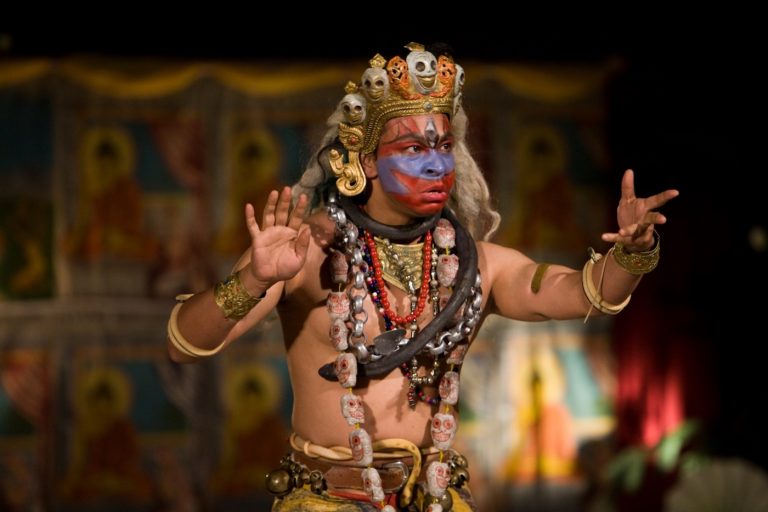
Ancient Dances
As a religious, philosophical, and ritual expression, dance has an important role in the practice of Buddhism, Taoism, Hinduism, and other Asian belief systems. Long unbroken transmissions of movement forms are reflected in religious artistic depictions, where performative iconography is mystical code as well as movement illustration.
In his column Ancient Dances, Joseph Houseal looks at the aspects of dance and spirituality to enhance practice and appreciation among readers, and to raise cultural awareness in our changing world. He uses dance as a lens to explore states of consciousness and symbolic representations.
Ancient Dances is published monthly.


Mario Fantin: Mountaineers, Ethnography, and Buddhism
Authentic encounters with vanishing worlds

Mongolia: A Complex Dance Survival
Sustaining an ancient legacy

Mongolian Tsam, Socialist Realism: People’s Painter Urjingiin Yadamsuren
One of the great ethnographers of Buddhist…

Three Aspects of Buddhist Dance
Dance actual, dance depicted, and dance ephemeral . . .

The Secret Life of Collections
Insights into Czech cultural connections with Buddhist…

Rarified, Recondite, and Abstruse: Zeami’s Nine Stages
The hidden wisdom of Japanese Noh

Dance and Museums, Celebrating Core of Culture at 20
Tracing Intangible world heritage and ancient dance…

Meditation in Motion, Footsteps to the Sublime
Tantric dance and treasures of the Vajrayana

Jardin aux Lilas, the First Zen Ballet
Capturing the Zen of unspoken heartbreak

Tyra Kleen: Mudra
Cross-cultural encounters with ritual dance

Dance in the Reality You Have
Reflecting and expressing authenticity

